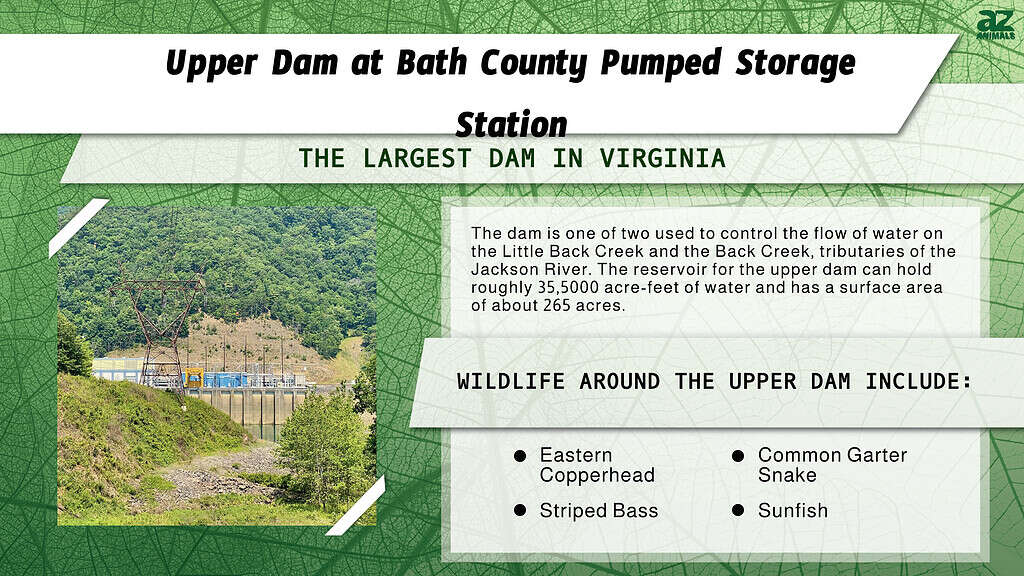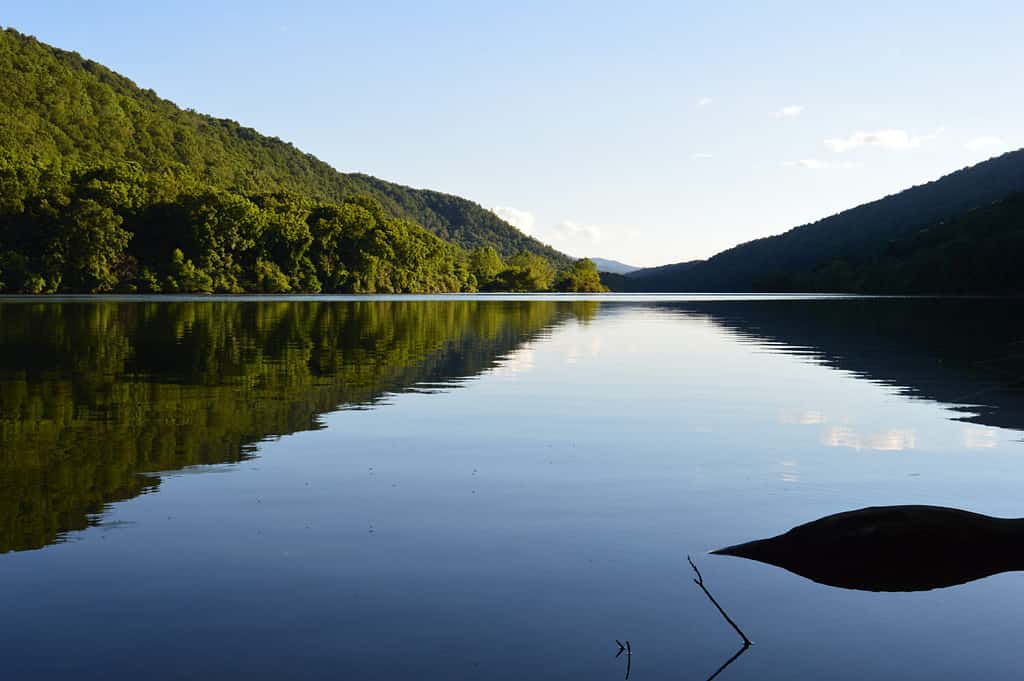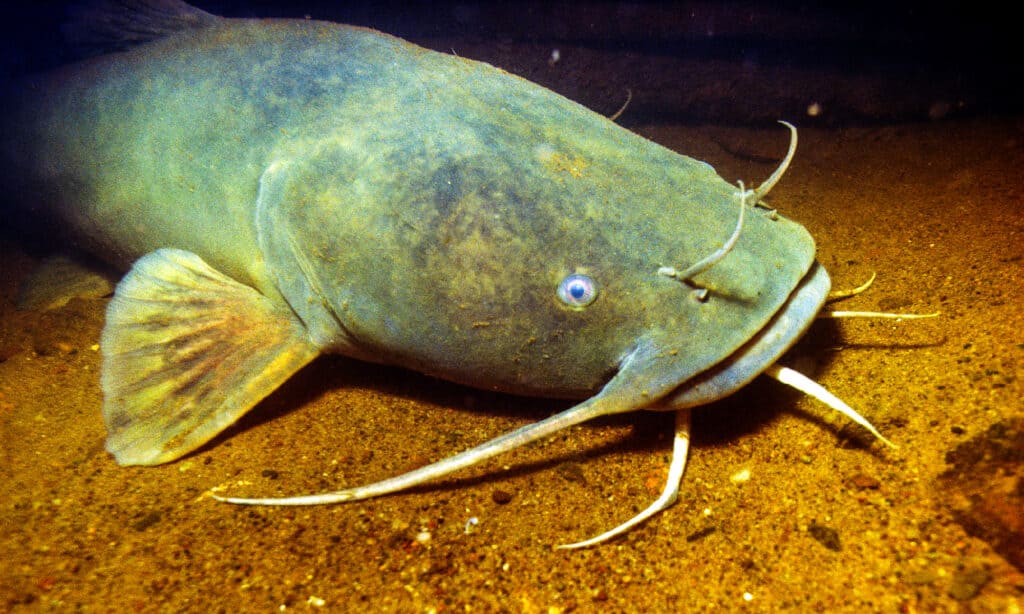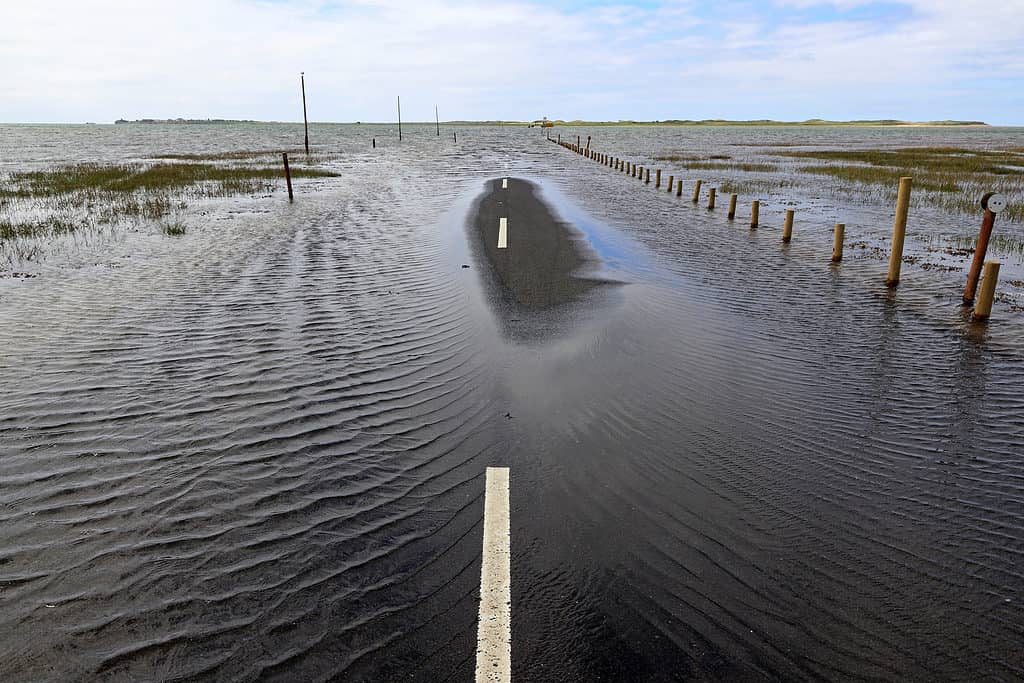The government in Virginia, like those in other states, uses dams to control the flow of freshwater throughout the state. Dams help prevent flooding, generate power, and ensure that usable water is available throughout the region. Some of these structures are very large while others are small, and they can be made from anything from concrete to earthen materials. Today, we are going to look at the largest dam in Virginia. This overview of the dam will cover its size and location and also consider what would happen if the dam broke.
What Is the Largest Dam in Virginia?
The largest dam in Virginia is the Upper Dam at the Bath County Pumped Storage Station, an embankment dam that stands 460 feet tall and measures 2,200 feet long. The dam has a total volume of 18 million cubic yards of soil and rock including an impervious core.
The dam is one of two used to control the flow of water on the Little Back Creek and the Back Creek, tributaries of the Jackson River. The reservoir for the upper dam can hold roughly 35,600 acre-feet of water and has a surface area of about 265 acres. By controlling the water flow of the creeks and reservoirs, the Bath County Pumped Storage Station can generate power.
This power plant is capable of generating 3,003 megawatts when operating at a peak capacity. That is enough power for millions of homes in the state. Yet, the power generation format used at this station is not typical. Learning the history of this dam and power station is necessary to understand how a seemingly inefficient process can benefit millions.

A History of the Bath County Pumped Storage Station Upper Dam

Lake Moomaw is located downriver of the dam in Bath County, Virginia.
©Michele M Cook/Shutterstock.com
The Bath County Pumped Storage Station was developed in the 1970s. The goal was to create a power station with a 2,100-megawatt capacity. The construction of the dam lasted from 1977 until 1985, and it cost roughly $1.6 billion. Currently, FirstEnergy and Dominion Generation own the structure, but Dominion Generation operates the station. The companies upgraded the turbines, increasing the power generation up to 3,003 megawatts.
The Bath County Pumped Storage Station is not a typical hydroelectrical dam. This structure relies on transferring water from one reservoir to another to make power. Typically, this is a one-way transaction where gravity makes the water flow from the reservoir into turbines. The turbines turn and generate electricity. In this case, pumped storage hydropower is a two-way transaction.
At times of peak energy usage, the water from the upper reservoir flows through 6 turbines at a rate of 13.5 million gallons per minute. That allows the plant to generate power normally. When the power demand is lower than normal, the Bath County Pumped Storage Station uses electricity generated at other power plants in the region to pump water from the lower reservoir back into the upper reservoir.
That is why people often refer to pumped storage hydropower plants as giant batteries. They can store and release power as the demand for it rises.
At first glance, this process may seem quite useless as it costs more energy to pump water from the lower reservoir to the upper reservoir than the plant generates when needed. It is an inefficient process at face value. Yet, this power generation allows the state’s nuclear and coal power plants to run at their top capacity, optimizing their operations and producing a net cost reduction for power in the state.
Where Is Bath County Pumped Storage Station Upper Dam Located on a Map?
As the power station’s name suggests, the pumped storage station and the upper dam are both located in Bath County. This county is in the northwestern part of the state, about four miles from the border with West Virginia.
The easiest way to get to the dam and reservoirs would be to travel from Warm Springs. From that town, take Virginia Route 39 to the west until you reach Virginia Route 600. Follow that road to a right-hand turn on Big Back Creek Road as you wind through the mountainous area. Take Big Back Creek Road north to the Bath County Recreational Campground.
Typically, the campground is the closest that people can get to the dam and power plant. The area is quite remote and beautiful, and there is plenty to do in terms of non-powered boating, fishing, and camping.
The Wildlife Near the Largest Dam in Virginia

Back Creek, the waterway that feeds the reservoir, is home to many different fish including flathead
catfish
.
©iStock.com/stammphoto
Bath County, Virginia has some very remote areas where wildlife can flourish. As a result, a wide assortment of species lives in the region. See a few of the different animals that thrive in this area on the list below:
- Eastern fence lizard
- Gray fox
- American beaver
- Common garter snake
- Eastern Mole
- American robin
- American Black bear
- Eastern hognose snake
- Virginia opossum
- Eastern copperhead
- Black-capped chickadee
These animals exist throughout large parts of the state. A few of them are potentially dangerous, including black bears and eastern copperheads.
Back Creek, the waterway that feeds the reservoir, has a host of different fish in it, including:
- Flathead catfish
- Rock bass
- Channel catfish
- Largemouth bass
- Striped bass
- Smallmouth bass
- Sunfish
Each of these fish can be caught in the waters near the dam, but many other kinds live in the creeks and reservoirs as well.
What Would Happen if the Dam Broke?

The valley in which the dam is located would limit flooding to the immediate area.
©iStock.com/Astrid860
The upper reservoir at the largest dam in Virginia holds 35,599 acre-feet of water, a huge amount of water. If the dam failed, all that water would be unleashed downriver. Fortunately, the water would probably be contained by the mountain valley in which the river flows, limiting the potential damage and danger. Still, any structures south of the reservoir would be destroyed.
The water would probably go as far south as Lake Moomaw, requiring action at the Gathright Dam to prevent a second failure. Fortunately, no large cities or highly populated towns are located nearby. While the damage would be severe in the local area and power generation would drop, relatively few lives would be lost for such an immense body of water suddenly being unleashed.
The largest dam in Virginia is a massive earthen structure. The power plant that operates nearby generates power for millions of people and helps balance the energy needs in the region. Many animals live in the area, but few humans occupy the region. The dam is large and structurally sound, so it shows no signs of failure. The chances are good that it will remain that way well into the future.
Thank you for reading! Have some feedback for us? Contact the AZ Animals editorial team.








